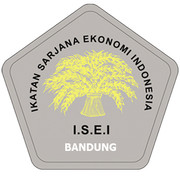Organizational Structure and Business Growth of Pharmaceutical Industry in Delta State, Nigeria
Abstract
This study examined influence organisational structure on business growth of pharmaceutical industry in Delta State. A cross-sectional research design and convenience sampling technique were adopted. A questionnaire was employed as the research instrument for this study with 109 respondents deemed usable. The autopoietic systems theory was used to explain how organisational structure might enhance business growth in Nigerian manufacturing firms. Statistical Package for Social Sciences (SPSS) software version 23.0 was used to perform descriptive and inferential statistics, correlation analysis, and simple regression analysis on the collected data.The results of the study revealed that organisational structure has a very strong positive and significant relationship with business growth. The study confirmed what was expected by demonstrating that organisational structure has a positive, significant impact on the expansion of the pharmaceutical sector in Delta State. The study's findings suggest that, in order to improve business growth, management in Nigeria's pharmaceutical industry should create the proper organisational structures to increase worker productivity and working conditions. In order to promote business growth, the study advises management in the Nigerian pharmaceutical industry to use formalised, a lower layer of organisational hierarchy, technology, and loose boundaries.
Keywords
Full Text:
PDFReferences
Ajagbe, M. A., Maduenyi, S., Oke, A. O., & Olatunji, F. (2015). Impacts of organisational structure on organisational performance. International Conference on African Development Issues, 4, 354-358.
Aluko, M., Odugbesan, O., Gbadamosi, G., & Osuagwu, L. (2011). Business policy and strategy. Lagos: Longman Publishers
Arikan, C., & Kirci, S. (2015). Effects of organisational structure at outsourcing companies to
Ashkenas, D., Ulrich, D., & Jick, T. (2002). The boundaryless organization: Breaking the chains of organisational structure. New York: Mechanical Industry Press.
Barkema, H., Baum, J. A. C., & Mannix, B. A. (2002). Management challenges in a new time. Academy of Management Journal, 45, 916-930.
Bausch, K. C. (2001). The emerging consensus in social systems theory. New York: E-book.
Bekanwah, D. S., Miidom, D. F., & Ukoha, O. (2020). Organisational structure and business growth in manufacturing firms in Nigeria. International Journal of Advanced Academic Research Social and Management Sciences, 6(5), 30-47.
Brickley, J., Smith, C., Willet, J., & Zimmerman, J. L. (2002). Designing organisations to create value: from strategy to structure. New York: McGraw Hill.
Chandler, A.D. (1962). Strategy and structure. Cambridge, M.A: MIT Press.
Chigozie, M. P., & Chijioke, E. (2015). Effect of organisational structure on performance of manufacturing firms in South East Nigeria. GE-International Journal of Management Research, 3(l2), 2 - 6.
Cole, G. A. (2002). Personnel and human resource management. London: Continuum Publisher.
Crombach, L. J. (1951). Coefficient alpha and the internal structure of test. Psychometrika.,16, 297-334.
Crosby, F. J. (1999). The developing literature on developmental relationships. New York: Harper Business.
Ezejiofor, R. A., & Ezekwesili, T. P. (2021). Organisational structure and employee performance: evidence from pharmaceutical companies in Anambra state, Nigeria. Innovations, 67, 76 – 89.
Greenberg, J. (2011). Behaviour in organization. Upper Saddle River, NJ: Prentice Hall.
Hair, J. F. Hult, G. T. M., Ringle, C. M., & Sarstedt, M. (2017). A primer on partial leas squares structural equation modeling. London: sage.
Hatch, M. J. (1997). Organisational social structure and theory. New York, NY: Oxford Publishing Limited.
Jaja, S. A. (2009). The entrepreneurship paradign. Port Harcourt: Cutting edge publishers.
Kamzi, A. (2003). Business policy and strategic management. New Delhi: McGraw-Hill.
Lim, M. (2017). Examining the literature on organisational structure and success. College Mirror, 43(1), 16 - 18.
Luhmann, N. (1995). The two sociologies and the theory of society. Cincinnati: South Western Publishing.
Macduffie, J. P. (1995). Human resource bundles and manufacturing performance: organisational logic and flexible production systems in the world auto industry. Industrial and Labor Relations Review, 48, 197-221.
Maturana, H. R., & Varela, F. J. (1980). Autopoiesis and cognition: the realization of the living, Dordrecht: Reidel Publishing Limited.
Nahm, A., Vonderembse, M. A., & Koufteros, X. (2003). The impact of organisational structure on time-based manufacturing and performance. Journal of Operations Management, 21, 281 – 306.
Nelson, D. B., & Quick, J. C. (2011). Understanding organisational behaviour. Mason: Cengage Learning Publishers.
Nnabuife, E. (2009). Organisational behaviour and management theory. Nimo: Rex Charles & Patrick Printing Limited.
Ogosi, C. D., & Agbaeze, E. K. (2018). Structure and organisational performance in the Nigerian banking system. European Journal of Social Sciences, 56(1), 37-48.
Okafor, N. C., Kalu, A. E., & Ozioma, O. H. (2017). Effect of organisational structure on performance of selected manufacturing companies in Enugu State Nigeria. International Journal of Business & Management, 5(5), 2-12.
Olajide, O. T. (2015). Effects of organisational structure on job satisfaction in the Nigerian financial sector: Empirical insight from selected banks in Lagos State. NG-Journal of Social Development, 5(1), 96 – 108.
Onodugo, V. (2000). Management fundamentals and practices. Enugu: El-Demark Publishers.
Porter, M. (1983). Competitive strategy: Techniques for analyzing industries and competitor. New York: Free Press.
Robbin S. P., & De-Cenzo D. A. (2005). Fundamentals of management: Essential concepts and applications. Upper Saddle River, NJ: Prentice Hall.
Robbins, S. P. (2000). Organization theory, Structure, design and applications. Englewood Cliffs, NJ: Prentice Hall.
Robbins, S. P., & Coulter, M. (2013). Management. England: Pearson Education Limited.
Samuel, A. P. & Lucent-Iwhiwhu, H. E. O. (2021). business strategies and their respective organisational structures in the Nigerian business organisations. International Journal of Business & Law Research, 9(2), 97-105.
Shabbir, M. S. (2017). Organisational structure and employee’s performance: A study of brewing firms in Nigeria. American Research Journal of Business and Management, 3(1), 1 - 16.
Stacey, R. D. (2001). Complex responsive processes in organisations: Learning and knowledge creation. London: Routledge.
Ugwu, J. N., Onoh Nnadi, C. S., & Udeze, C. C. (2019). Organisational structure and employee’s performance in selected micro-finance banks in Enugu State, Nigeria. Journal of Humanities and Social Sciences, 4(1), 38-52.
Wegwu, M. E., & Umoru, J. O. (2021). Organisational structure and business growth in the manufacturing industry in Nigeria Int. J. Business Management. 4(5), 33-43.
DOI: https://doi.org/10.17509/image.2023.012
Refbacks
- There are currently no refbacks.
Copyright (c) 2023 Ugo Chuks Okolie, Oghenenyerhowvo Shulammite Omogbiya, Grace Aruoriwo-oghene Addah

This work is licensed under a Creative Commons Attribution-ShareAlike 4.0 International License.
Image : Jurnal Riset Manajemen is licensed under a Creative Commons Attribution-ShareAlike 4.0 International License
View My Stats



